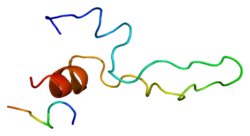| CCKAR | |||||||||||||||||||||||||||||||||||||||||||||||||||
|---|---|---|---|---|---|---|---|---|---|---|---|---|---|---|---|---|---|---|---|---|---|---|---|---|---|---|---|---|---|---|---|---|---|---|---|---|---|---|---|---|---|---|---|---|---|---|---|---|---|---|---|
 | |||||||||||||||||||||||||||||||||||||||||||||||||||
| |||||||||||||||||||||||||||||||||||||||||||||||||||
| Identifiers | |||||||||||||||||||||||||||||||||||||||||||||||||||
| Aliases | CCKAR , CCK-A, CCK1-R, CCK1R, CCKRA, cholecystokinin A receptor | ||||||||||||||||||||||||||||||||||||||||||||||||||
| External IDs | OMIM: 118444; MGI: 99478; HomoloGene: 37337; GeneCards: CCKAR; OMA:CCKAR - orthologs | ||||||||||||||||||||||||||||||||||||||||||||||||||
| |||||||||||||||||||||||||||||||||||||||||||||||||||
| |||||||||||||||||||||||||||||||||||||||||||||||||||
| |||||||||||||||||||||||||||||||||||||||||||||||||||
| |||||||||||||||||||||||||||||||||||||||||||||||||||
| Wikidata | |||||||||||||||||||||||||||||||||||||||||||||||||||
| |||||||||||||||||||||||||||||||||||||||||||||||||||
| Cholecystokinin A receptor, N-terminal domain | |||||||||
|---|---|---|---|---|---|---|---|---|---|
 molecular complex of cholecystokinin-8 and n-terminus of the cholecystokinin a receptor by nmr spectroscopy | |||||||||
| Identifiers | |||||||||
| Symbol | CholecysA-Rec_N | ||||||||
| Pfam | PF09193 | ||||||||
| InterPro | IPR015276 | ||||||||
| SCOP2 | 1d6g / SCOPe / SUPFAM | ||||||||
| |||||||||
The Cholecystokinin A receptor is a human protein, also known as CCKAR or CCK1, with CCK1 now being the IUPHAR-recommended name.





